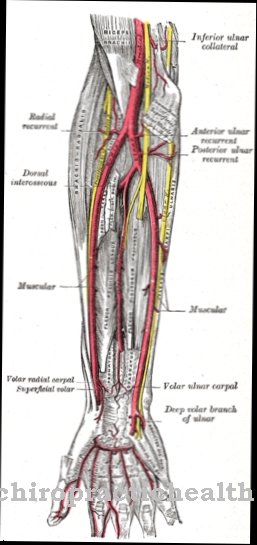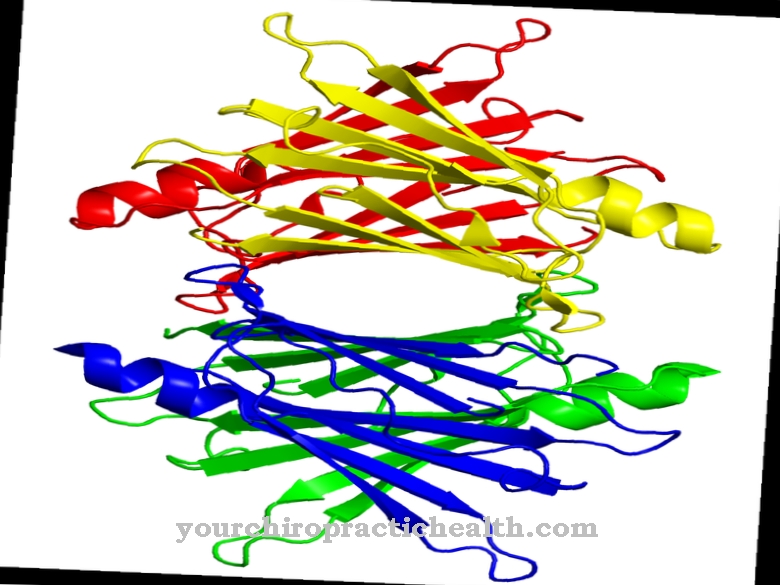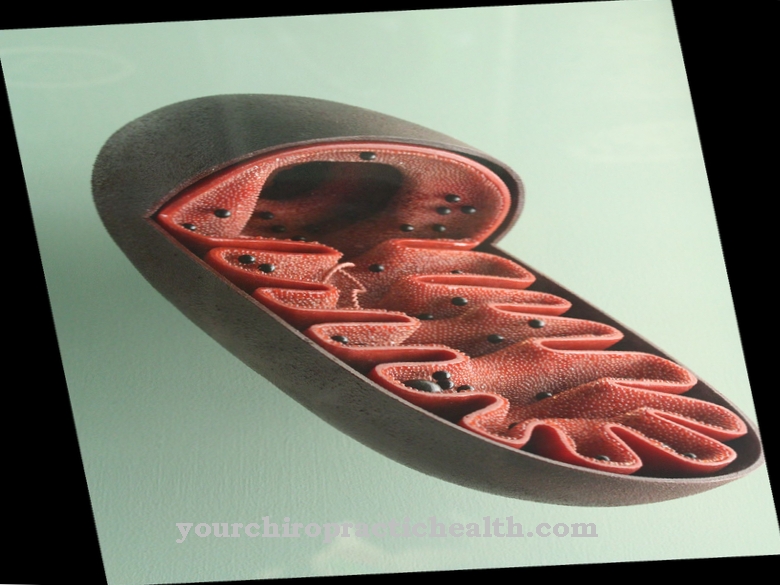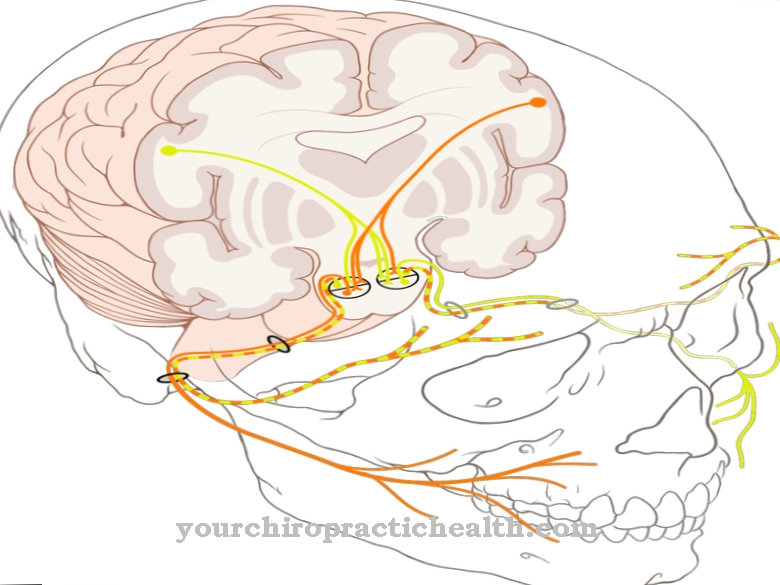Under the Eustachi tube the medic understands that Eustachian tubethat connects the nasopharynx with the middle ear. This anatomical structure is used to equalize pressure and drain secretions. Both a permanent closure and a lack of closure of the eustachian tube have a disease value.
What is the eustachi tube?
The eustachi tube is also called the ear trumpet or Tuba auditiva known. The tympanic cavity of the middle ear is connected to the nasopharynx via this tube, which is around 30 to 35 millimeters long. The tube runs through the posterior level of the bony temporal bone canal and is made up of two different sections.
Birds as well as reptiles and mammals are equipped with the paired tube connection. Some animals from the unpaired hoof genus also have a sack-like extension of the tube connection, which is also known as an air sack. The Italian anatomist Bartolomeo Eustachi gave the Eustachi tube its name. He first accurately described the tubular connection between the middle ear and the nasopharynx during the 16th century.
Alkmaion is said to have discovered the structure as early as 500 BC. However, the description at the time incorrectly suspected an additional breathing opening which, according to the findings of the time, only goats seemed to be equipped with. Eustachi was the first to document the tube in its actual shape and function. In the course of embryonic development, the auditory tuba emerges from the proximal tubotympanic recess, which corresponds to the booking of the first pharyngeal pouch.
Anatomy & structure
The bony part of the tuba auditiva lies towards the tympanic cavity. The cartilaginous part of the structure is located towards the nasopharynx and makes up about two-thirds of the entire eustachian tube. The cartilage structure corresponds to elastic cartilage, which is also called tube cartilage. This tube cartilage consists of a thin and a wide end and is attached to three muscles.
These three muscles are the throat muscles, the tensor veli palatini, the levator veli palatini, and the salpingopharyngeus muscle. The tensor veli palatini muscle sits at the thin end of the cartilage and tenses against the internal tension of the tubular cartilage. The levator veli palatini muscle lies on the lower tube cartilage and pushes this part of the tube upwards. The salpingopharyngeus muscle sits in the middle of the thick end of the cartilage and keeps the movements under control through the levator veli palatini muscle.
The cartilaginous and bony sections of the auditory tuba merge into one another in a physiological constriction. The tube can open both towards the nasopharynx and towards the tympanic cavity. The opening towards the nasopharynx also includes two protrusions of the mucous membrane.
Function & tasks
As long as the auditory tuba is closed, it protects the middle ear from infections rising from the nasopharynx. The tube cartilage, which compresses the tube through its own tension, performs this locking function. The three muscles, the tensor veli palatini, the levator veli palatini and the salpingopharyngeus muscle, control the tube closure. The eustachi tube only opens when swallowing, yawning and articulating certain sounds. This opening is sometimes noticeable as a clicking sound in the ear.
Air pressure equalization takes place in the ear trumpet when it opens. The pressure in the middle ear can thus be adapted to the air pressure in the nasopharynx and thus to the outside air pressure. This compensation takes place primarily when swallowing and yawning. If you cover your nose and mouth and try to breathe out at the same time, you can arbitrarily open the ear trumpet and thus set the pressure equalization in motion. This process is also known as the Valsalva maneuver.
In a similar way, the targeted tension of the three throat muscles can open the auditory tuba and thus enable pressure equalization. Without the air pressure equalization, the eardrum would bulge painfully. In addition to the pressure-equalizing functions, the ear trumpet also has the task of a middle ear drainage. Fluid is drained from the middle ear via the auditory tuba.
Diseases
In diseases that involve the upper respiratory tract, the eustachian tube may become narrowed due to swelling of the mucous membranes. A closure of the tube can, for example, trigger a tympanic effusion, i.e. a painful accumulation of fluid in the middle ear. Complete occlusions of the tuba auditiva are also known as tubal middle ear catarrh.
In the case of infectious diseases of the respiratory tract, bacterial infections may rise into the middle ear through the tuba auditiva and thus trigger an otitis media. Most otitis media are bacterial. More rarely, fungi or viruses are responsible for the infection. Sometimes the ear trumpet also develops into a gaping tube. With this phenomenon, the eustachian tube remains largely open. The doctor then speaks of insufficient tube closure. A leading symptom of this phenomenon is the so-called autophony. Own body noises are now perceived as unnaturally loud because they are transmitted directly to the middle ear.
There are various possible causes for this phenomenon. Hormonal changes and strong weight reductions are just as important as scars in the nasopharynx or any tumor radiation. Contrary to popular belief, in most cases the eardrum remains intact in both the gaping tube and the middle ear catarrh. The audiologist can check the permeability of the tuba autitiva as part of the so-called tube function test. This functional test can correspond to a blow-through, but it can also include the Valsava test.
























.jpg)



